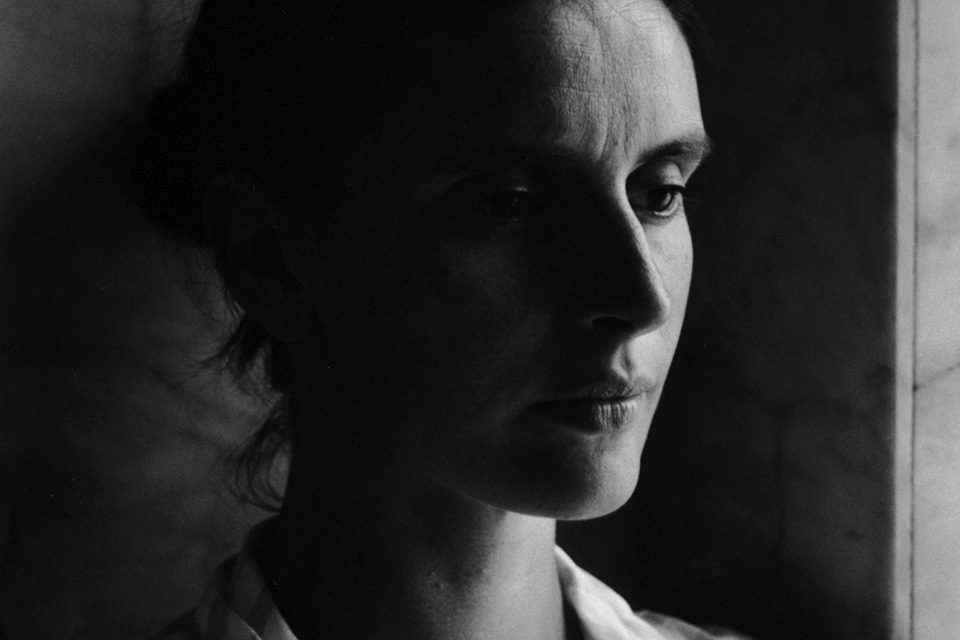Margaret Salmon is an American born photographer and filmmaker, who was setting trends in the UK with her exhibition at the Whitechapel Art Gallery, London in early 2007; the result of winning the first and rather prestigious MaxMara Art Prize for Women competition.
The world-renowned Italian fashion house, MaxMara, in association with Whitechapel, created the competition to help nurture and promote emerging female artists based in the UK and to enable their development by providing the opportunity to produce new works of art through a six-month residency in Italy, culminating with a show of those works at the Whitechapel. Margaret Salmon entered the competition proposing to create black and white films of Italian women in different stages of motherhood. Salmon says she is thrilled to have won, as she had her heart set on completing the residency and making the films. This is Margaret Salmon’s first major work since finishing her master’s degree and giving birth to her daughter.
The films that transpired since completing the six-month residency, entitled Ninna Nanna, are filmed in the usual Salmon style with sharply cropped camera angles, graphic composition, and the non-use of actors or constructed sets. Ninna Nanna is a triptych of three films shot in 16mm black and white and colour film. The films depict the experience of three Italian mothers in different stages of early motherhood, filmed in their domestic surroundings and set to a soundtrack of a traditional Italian lullaby. Ninna Nanna, is so called as such because that is the name of an Italian lullaby. Each of the three films celebrates the tenacity and grace of the three mothers while at the same time acknowledging the contradictions between the iconography of motherhood and the reality of bringing up a child. Sound is key to Salmon’s work as is emotional content, and in this case Salmon says she was “looking for divides.” She didn’t really follow the class division in Ninna Nanna. What she was looking for was geographical divisions, “there are parameters for the Italian space and I wanted to engage with it.” All of the films have a different look because they were shot in various regions of Italy and Salmon’s hope is that it will be recognisable to an audience. Margaret has always been interested in a sociological point of view. In Italy, her job was made simpler because there is natural geographical divide, so the work was fluid.
Showing simultaneously with Ninna Nanna are two of Margaret Salmon’s major recent works, PS (2002) and Peggy (2003). She has chosen to show these in conjunction with the prize piece to demonstrate to viewers where she has come from. Both are characteristic of her style of filmmaking and are set to thought-provoking and moving soundtracks. In PS (2002), the audience sees a middle-aged man working in a garden, walking through landscapes and caught smoking in the front of brilliant fireworks display. The film is looped several times and set to the pre-recorded conversation between a man and a woman. At times it is very tense and seemingly focuses on the breakdown of their relationship. Peggy (2003) takes the audience on a journey through the daily tasks of an elderly woman. Amazing Grace plays tenderly in the background evoking feelings of isolation and frailty, yet enduring strength. There are poignant moments when the woman’s rasping voice enters into this perfectly filmed picture and allows the viewer to become engulfed in the images and sound. Salmon says, “Sound is intimate and multi-dimensional. It can bridge the distance between viewer and subject. Sound can bring a viewer closer to the material they are seeing because of its natural qualities.” In terms of Margaret Salmon’s personal choice of music she likes it to tell a story and therefore the lyrics are very important. The social significance of the music from the 60s appeals to her and so she listens to classics such as Joni Mitchell and Simon and Garfunkel. In her own work she places a great deal of importance on both visual images and sound. This makes her work much more rounded and full. Salmon’s use of sound in all of her work makes it incredibly original and innovative and also somewhat indicative of the work directors who inspire her, such as Luchino Visconti and John Ford, have produced in the past.
In all of the films that showed at Whitechapel as par of her exhibition, Margaret Salmon examines social issues and enters them into a discussion or an examination of an individual. Each film is made not as a documentary, but as a portrayal or an archetype and the issues surrounding them. There is a clear focus on the human condition and the strengths and frailties, which accompany that. A lovely connection and juxtaposition is seen in the new mothers, the middle-aged man and the old woman.
Salmon’s work is deeply stunning and weighted with real social and humanistic issues. Her down-to-earth, humble attitude makes her work all the more genuine and authentic. Salmon says she is still learning the craft and has a lot of research to continue with in order to sustain the high level of work she aims to produce. With regards to her future plans, she says, “I am comfortable in the art world and making work for galleries.” Salmon is happy and content in the UK with her husband and daughter, living in Whitstable, Kent. After many years of travelling and working on location as a photographer, Margaret wants to settle in just one place for the moment. If the exhibition at the Whitechapel is anything to go on, there are great things to come from this ambitious filmmaker and we will be seeing much more of Margaret Salmon.
Keely Griffiths





